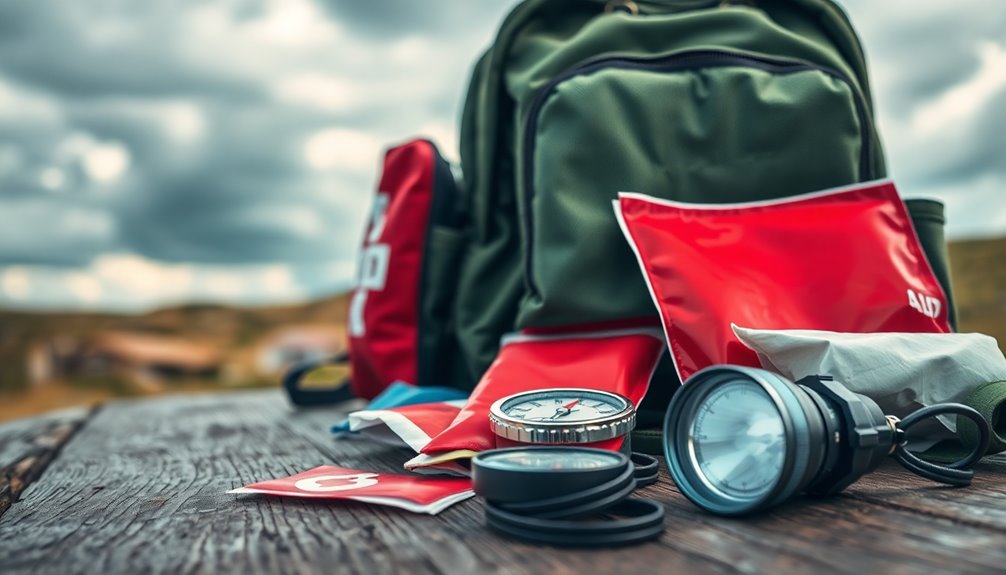Learning from past emergencies is vital for better preparedness. Make sure you have at least seven days' worth of essential supplies and $1,000 cash handy. Medical help may be limited, so basic first aid training is a must. Keep communication lines open, using reliable methods like battery-operated radios. Engage with your community to build resilience and share plans. Each lesson shapes your readiness; you'll find additional insights to further enhance your emergency strategies and safeguard your well-being.
Key Takeaways
- Stock at least seven days' worth of essential supplies to avoid shortages during emergencies.
- Keep a well-stocked first aid kit and invest in medical training for effective response.
- Maintain at least $1,000 in cash for emergencies, as electronic systems may fail.
- Regularly conduct community drills and engage in local training to enhance overall readiness.
- Diversify communication methods and utilize battery-operated radios for reliable information access.
Preparedness Lessons Learned From Past Disasters
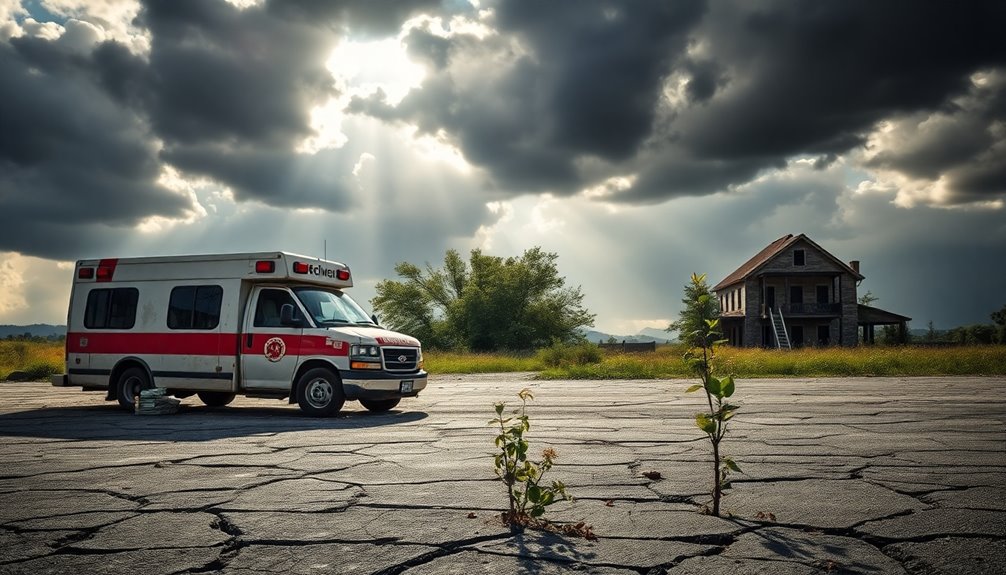
When past disasters struck, many people found themselves unprepared, despite clear warnings. The lessons learned highlight the necessity of keeping at least seven days' worth of essential supplies on hand.
You should also recognize that Emergency Medical Services (EMS) often get overwhelmed or cease operations, so having personal medical training and a well-stocked first aid kit is critical.
Additionally, cash transactions can be important when cellular and internet services fail, so having at least $1,000 in cash accessible is wise.
Reliable communication sources, like hand-crank or battery-operated radios, are essential for staying informed.
The Importance of Timely Cash Access

When disaster strikes, relying solely on digital payments can leave you in a tough spot.
Having cash on hand is essential, as ATMs and card readers often fail during emergencies.
Keeping a stash of cash ready guarantees you can access necessities without the hassle of long lines or system outages.
Emergency Cash Availability
Having cash on hand during an emergency can make all the difference in accessing essential supplies. When disaster strikes, cellular and internet outages can render ATMs and card transactions useless.
That's why disaster preparedness includes keeping at least $1,000 in cash stored safely in bugout bags or home safes. Long lines at functioning ATMs are common as people rush to withdraw cash, underscoring the importance of preemptive cash availability.
Additionally, electronic payment system failures often create shortages at supermarkets and gas stations. By having cash ready, you can secure the necessities quickly and reduce reliance on disrupted banking systems, ensuring you meet your immediate needs during a crisis.
Be proactive—prepare now for an uncertain future.
Digital Payment Failures
Though digital payment systems have revolutionized how we conduct transactions, they can quickly become unreliable in emergencies. During a disaster, cellular and internet outages can leave you unable to access funds. Long lines at functioning ATMs highlight the importance of having cash on hand.
Here are four reasons why you should prepare:
- Cash transactions are essential when electronic systems fail.
- Aim to keep at least $1,000 readily accessible.
- Store cash in bugout bags or safes to avoid panic.
- Communities with cash-prepared residents face fewer purchasing challenges during crises.
Limited Emergency Medical Services: A Major Concern

When emergencies strike, having medical training can be a lifesaver.
You should also keep a well-stocked first aid kit at home to handle injuries effectively until professional help arrives.
Preparing for limited EMS access is essential to guarantee you and your loved ones stay safe in any crisis.
Medical Training Importance
As disasters unfold, Emergency Medical Services (EMS) often face overwhelming challenges that can lead to delays in treatment for those with serious injuries. This highlights the medical training importance for individuals like you. By being prepared, you can make a difference when help is delayed.
Here are some valuable insights to reflect on:
- Empowerment: Basic medical training allows you to manage injuries effectively.
- Preparedness: Stock a home first aid kit and essential medications.
- Community Resilience: Engage in first aid and emergency response training with others.
- Health Management: Ascertain you have a plan for those with health complications during emergencies.
First Aid Kit Essentials
A well-stocked first aid kit is an essential lifeline during emergencies, especially when emergency medical services (EMS) may be limited. To equip yourself effectively, focus on first aid kit essentials like adhesive bandages, antiseptic wipes, gauze pads, and adhesive tape.
Don't forget scissors and tweezers for removing splinters or cutting tape, and keep over-the-counter pain relievers handy. Including a thermometer, instant cold packs, and a basic first aid manual can guide you in emergencies.
It's also wise to maintain a 30-day supply of prescription medications and essential over-the-counter drugs to manage health issues when medical care is out of reach.
Finally, consider training in basic first aid and CPR to empower your response when professional help isn't available. Additionally, ensuring that your air quality is optimal can enhance your overall health during emergencies, as air purifiers play a vital role in reducing allergens and pollutants.
Communication Is Key During Emergencies

Effective communication is crucial during emergencies, guaranteeing that you and your community stay informed and safe.
When disasters strike, reliable sources of information become invaluable. Here are four key strategies to enhance your communication during emergencies:
- Use local radio stations: They provide critical updates when cellular and internet services fail.
- Invest in hand-crank or battery-operated radios: These are essential for receiving information when power is out.
- Establish pre-planned communication methods: This guarantees everyone knows how to reach each other.
- Participate in regular training: Educate yourself and your community on effective communication strategies. Additionally, understanding navigation tools can help you find your way to safety when traditional communication methods fail.
Stocking Up: Essential Supplies for Disasters

When disaster strikes, having the right supplies can make all the difference. You should focus on stocking non-perishable food items and putting together a thorough first aid kit. These essentials will help you stay safe and nourished when access to resources is limited. Additionally, understanding the importance of emergency preparedness essentials will empower you to better navigate unforeseen situations.
Non-Perishable Food Items
Preparing for emergencies means guaranteeing you've stocked up on non-perishable food items, which can be a lifesaver when fresh options are unavailable.
This vital step not only supports your basic needs but also contributes to risk reduction during crises. Aim for at least seven days of supplies, focusing on variety to maintain nutrition.
Here are four essential non-perishable items to include in your stockpile:
- Canned goods (vegetables, fruits, meats)
- Dried beans and legumes
- Rice and pasta
- Freeze-dried or dehydrated meals
Don't forget to store at least 1 gallon of water per person per day for three days.
Regularly check expiration dates and rotate your supplies to guarantee everything stays fresh and usable when you need it most. Additionally, consider having waterproofing supplies on hand to protect your food items from moisture during emergencies.
First Aid Essentials
Stocking non-perishable food items is only one part of your emergency preparedness plan; having a well-equipped first aid kit is just as essential.
Your first aid essentials should include sterile bandages, antiseptics, gauze pads, and over-the-counter pain relievers to tackle common injuries.
Don't forget to keep a 30-day supply of any prescription medications and basic over-the-counter options like antihistamines and anti-inflammatories.
If you have chronic conditions, make certain you have specific supplies, such as oxygen tanks or insulin.
Training in basic first aid and CPR can also greatly increase your effectiveness in emergencies, especially when facing narcissistic behaviors that can complicate crisis situations.
Regularly check and replenish your kit to make sure everything's up-to-date and ready when you need it most.
Health Complications: Preparing for the Vulnerable
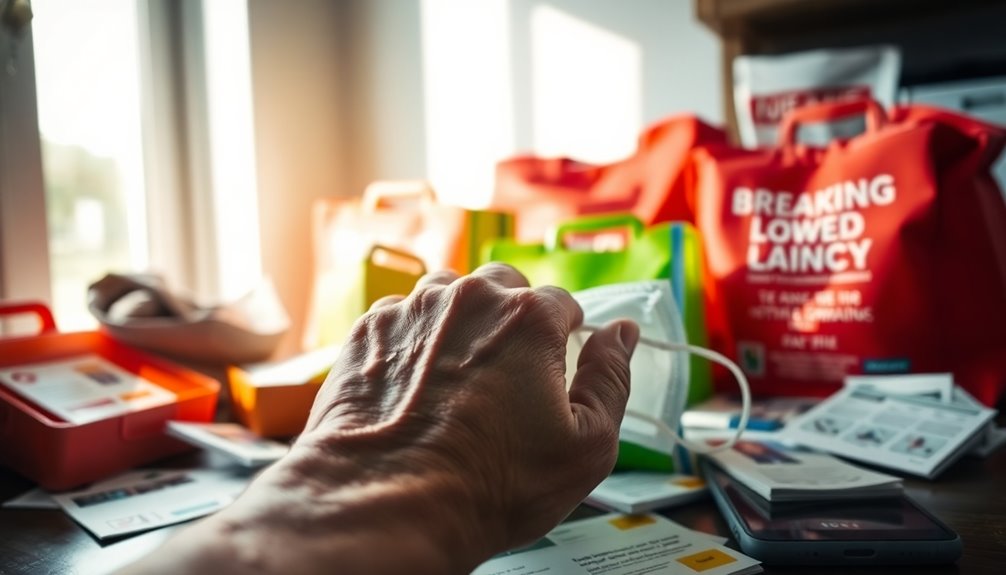
Understanding the unique challenges faced by individuals with health complications is essential during emergencies, as their needs often intensify under stress.
To enhance preparedness, consider the following steps:
- Backup Power Solutions: Verify you have reliable power sources for essential medical equipment, like oxygen machines, during outages.
- Medication Supply: Stock a 30-day supply of prescription medications and over-the-counter drugs to manage health needs effectively.
- Home Medical Supplies: Equip your home with medical supplies and basic training, as Emergency Medical Services may be limited during disasters.
- Emergency Plans: Collaborate with caregivers and family to create and share emergency plans that address specific health requirements.
Additionally, it is crucial to understand that breast cancer treatment can be complex, requiring thoughtful planning and resources to ensure all health needs are met during emergencies.
The Role of FEMA in Disaster Response
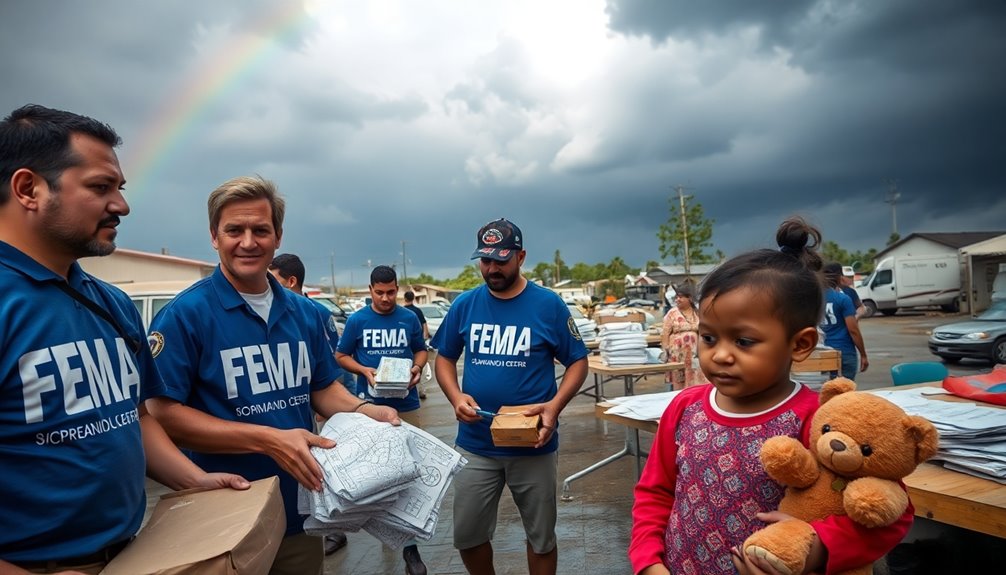
When disaster strikes, FEMA steps in to coordinate response efforts, relying on contracts with private companies and local agencies.
This collaborative approach allows for a more effective management of emergencies, ensuring that trained personnel and resources are readily available.
Understanding FEMA's role in this framework can help you appreciate how community resilience is built through teamwork and preparedness.
FEMA's Contractual Framework
FEMA plays a crucial role in disaster response by leveraging contracts with private companies and municipal agencies to guarantee resources and personnel are efficiently deployed during emergencies.
Through FEMA's contractual framework, you can see how emergency management becomes more effective. Here are four key components:
- Disaster Medical Assistance Teams (DMAT) supplement local responders with specialized medical care.
- Urban Search and Rescue (USAR) Teams provide critical search capabilities during major disasters.
- Funding for essential services enhances local preparedness by supporting police, medics, and rescuers.
- Free online training in the Incident Command System (ICS) and National Incident Management System (NIMS) equips local responders.
Local Agency Collaboration
Effective disaster response relies heavily on collaboration between FEMA and local agencies. When disasters strike, FEMA coordinates with local resources, like Disaster Medical Assistance Teams (DMAT) and Urban Search and Rescue (USAR) Teams, enhancing local capabilities for effective recovery.
Your community's resilience improves through FEMA's training programs, offering free online courses in the Incident Command System (ICS) and National Incident Management System (NIMS). These programs empower local police, fire, and EMS, ensuring they're well-prepared when emergencies arise.
Moreover, FEMA's partnerships with municipal agencies and private organizations are crucial for securing funding and timely response services. Clear communication and coordination among all involved are essential, with FEMA at the heart of facilitating these relationships for successful disaster management.
Understanding the Need for Community Preparedness

While emergencies can strike unexpectedly, being prepared as a community can make all the difference in how we respond and recover.
Community preparedness is essential, especially when many individuals overlook prior warnings. Here are four key steps you can take to enhance your community's readiness:
- Mental Readiness: Stay informed and develop a positive mindset about emergencies.
- Share Plans: Discuss your emergency plans with family and friends to guarantee everyone knows what to do.
- Engage Locally: Participate in training programs like Incident Command System (ICS) and National Incident Management System (NIMS).
- Knowledge Sharing: Collaborate with neighbors to exchange resources and develop task forces tailored to local risks.
Reliable Information Sources: Staying Informed
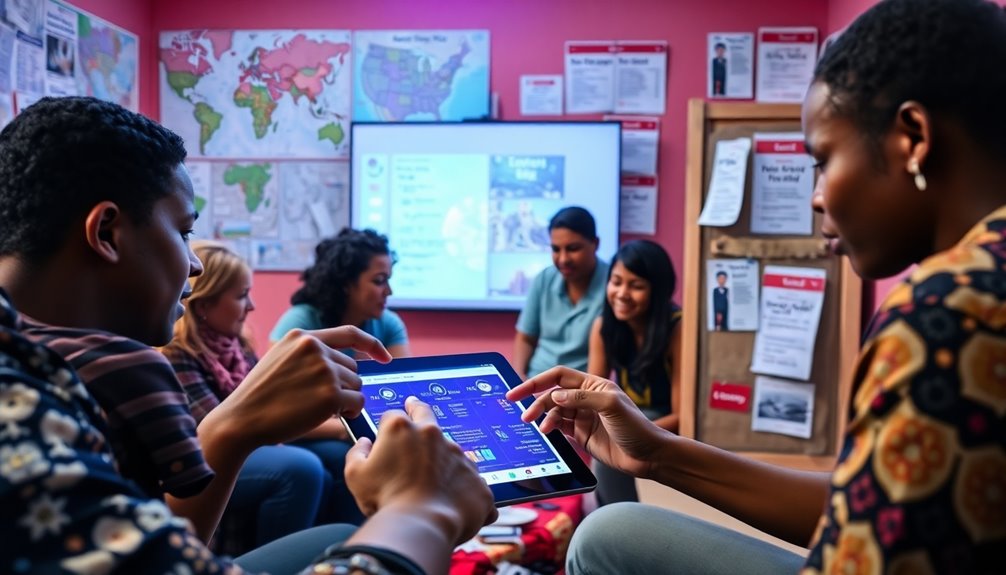
When an emergency strikes, having reliable information sources can make all the difference in how you respond. Cellular and internet outages can limit your access to real-time updates, so it's vital to have alternatives like local radio stations.
Invest in a hand-crank or battery-operated radio to guarantee you can receive news even when the power's down. Stock up on batteries for your communication devices, as they may be your lifeline during extended outages.
Establish pre-planned communication strategies with family and friends to effectively share information when traditional methods fail. Utilizing old-school prepper advice, like keeping a physical list of local emergency contacts, enhances your reduction strategies and guarantees you stay informed when technology lets you down.
Mitigating Risks: Importance of Risk Assessment

Risk assessment plays a vital role in emergency preparedness, as it helps you identify potential hazards and vulnerabilities within your community.
By conducting thorough risk assessments, you can enhance your preparedness and response strategies. Here are four key benefits of risk assessment:
- Identify specific needs for emergency medical supplies, especially for high-risk groups.
- Utilize historical data to inform community preparedness plans, minimizing casualties and damage.
- Ensure physical health by maintaining a 30-day supply of prescription medications.
- Boost community resilience through regular assessments, leading to reduced impacts during disasters.
Embracing risk assessment not only prepares you for emergencies but also strengthens your community's ability to respond effectively when disaster strikes.
Training and Education for Effective Preparedness
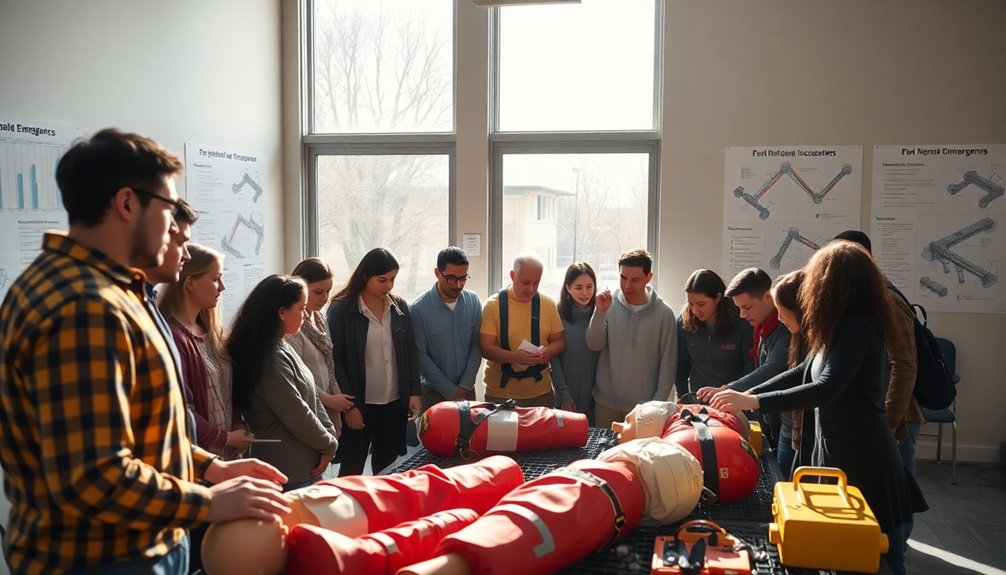
Effective training and education are essential for enhancing preparedness in the face of emergencies. By engaging in training programs like the Incident Command System (ICS) and National Incident Management System (NIMS), you can build a solid foundation for coordinated responses. Regular simulation exercises sharpen your readiness and adaptability. Community involvement promotes resilience through shared knowledge and resource planning.
Here are some best practices to reflect upon:
| Training Method | Benefits | Resources Available |
|---|---|---|
| ICS and NIMS Training | Builds coordination skills | Free online courses |
| Simulation Exercises | Enhances real-time response | Local training programs |
| Community Engagement | Fosters collective resilience | Workshops and informational sessions |
Incorporating lessons learned from past emergencies will also help identify gaps in your preparedness.
Analyzing Past Disasters for Future Improvements

Analyzing past disasters not only sheds light on where preparations fell short but also highlights the critical steps that can lead to better outcomes in future emergencies.
By understanding previous failures, you can implement effective mitigation measures.
Consider these key takeaways:
- Prepare for shortages: Stock essential supplies like food and fuel in advance.
- Coordinate evacuations: Prioritize well-planned evacuations to save lives.
- Address health needs: Guarantee vulnerable populations, like oxygen-dependent individuals, have targeted assistance.
- Maintain cash reserves: Keep cash on hand, as ATMs and card systems may fail.
- Incorporate eco-friendly practices: Using seasoned wood can reduce environmental impact during heating emergencies, ensuring a sustainable approach to energy use.
The Power of Community Engagement in Preparedness
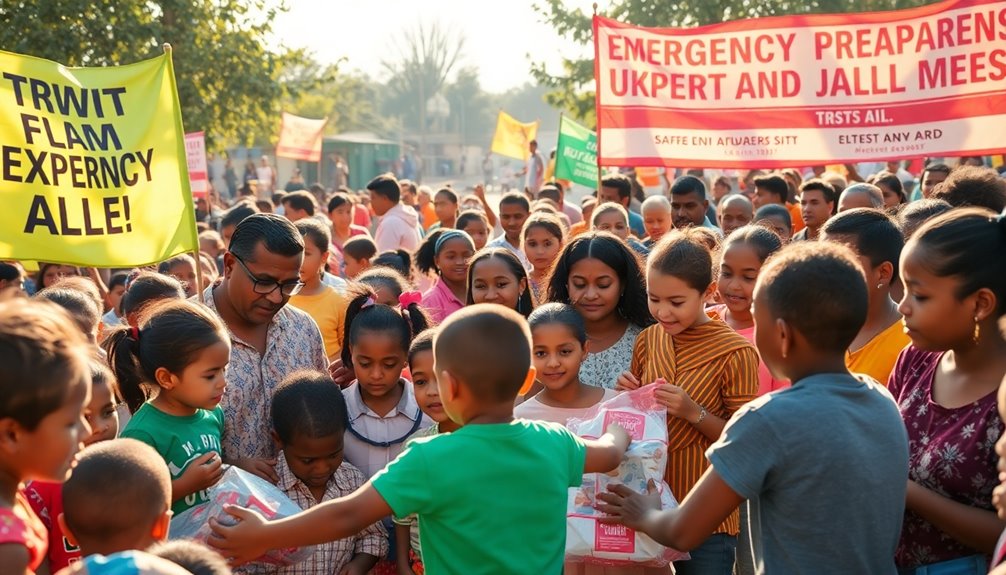
When communities come together to prepare for emergencies, they not only strengthen their resilience but also foster a sense of shared responsibility.
By engaging in local training sessions and sharing resources, you can provide valuable support to your neighbors, enhancing individual readiness.
Collaboration improves communication, ensuring timely updates through local radio stations when other methods fail.
Active participation in preparedness planning helps identify vulnerabilities, allowing you to tailor response strategies that address unique community needs.
Regular emergency drills and workshops boost overall response capabilities, evidenced by improved coordination during disasters.
Establishing local task forces empowers residents to take proactive steps, resulting in a more informed and prepared population, ready to face potential crises together.
Lessons From Past Emergencies: a Call to Action

Reflecting on past emergencies reveals a stark truth: many people were caught unprepared despite clear warnings.
To reduce the risk of facing similar challenges, take action now. Here's what you can do:
- Stock Up: Keep at least seven days' worth of essential supplies at home.
- Learn First Aid: Equip yourself with medical training and maintain a well-stocked first aid kit.
- Stay Informed: Invest in a battery-operated or hand-crank radio for reliable information during crises.
- Have Cash Ready: Keep $1,000 in cash on hand to navigate potential transaction failures due to outages.
Additionally, consider the importance of robust contingency plans to mitigate the impacts of unforeseen events like service outages.
These proactive steps can make a significant difference when emergencies strike, ensuring you're prepared instead of scrambling.
Building Resilience Through Preparedness Initiatives
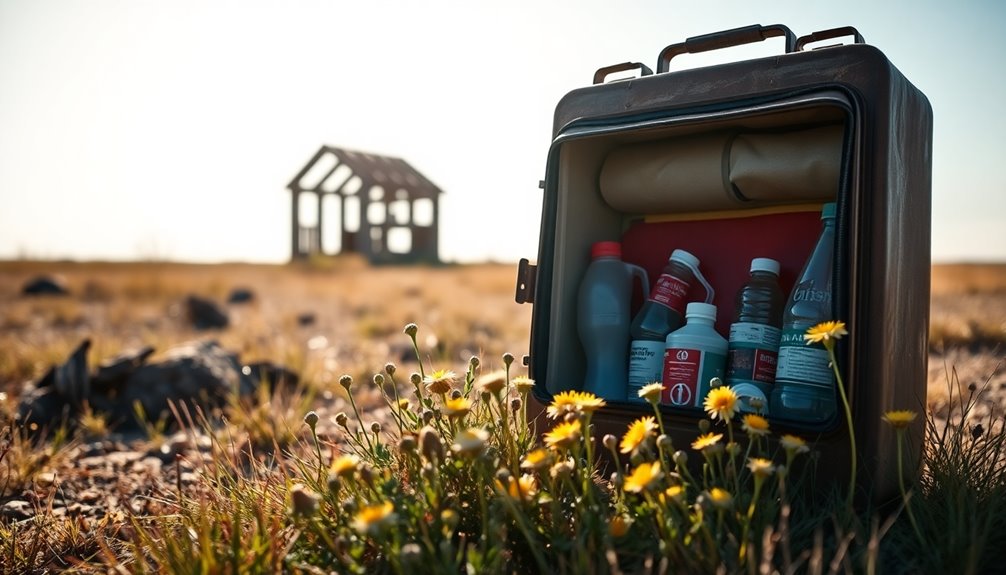
Preparedness isn't just about individual actions; it's about fostering resilience within communities. To build this resilience, you need to implement effective preparedness measures. Start by guaranteeing you have essential supplies, like a seven-day emergency kit, medical supplies, and cash reserves. Community training in ICS and NIMS is vital for equipping everyone with necessary response skills. Engage your family and friends in discussions about preparedness plans to cultivate a supportive environment. Additionally, understanding the importance of early detection of brain fog can help in managing cognitive challenges during emergencies.
| Preparedness Measure | Importance | Community Action |
|---|---|---|
| Emergency Supplies | Sustains during crises | Organize supply drives |
| Medical Readiness | Guarantees health access | Host first aid workshops |
| Cash Reserves | Facilitates transactions | Community cash preparedness day |
Frequently Asked Questions
Why Is It Important to Learn About Emergency Preparedness?
It's essential to learn about emergency preparedness because it equips you with the knowledge and skills to handle unexpected situations.
By understanding the importance of having supplies, accessible cash, and first aid training, you can protect yourself and your loved ones.
Reliable communication tools guarantee you stay informed during crises.
Engaging with your community in preparedness efforts strengthens resilience and fosters a supportive environment, making it easier to navigate emergencies together when they arise.
What Have You Learned About the Importance of Disaster Preparedness?
You might think it'll never happen to you, but disasters can strike when you least expect them. Learning about disaster preparedness is essential.
It empowers you to act swiftly, ensuring you have the supplies, skills, and knowledge to keep yourself and loved ones safe.
You'll realize that having cash on hand, a stocked first aid kit, and reliable communication can make all the difference when chaos unfolds.
Stay prepared, and you'll be ready to face anything.
Why Is It Important to Learn About Disasters From the Past?
Learning about past disasters is essential because it helps you understand vulnerabilities in your community.
You see firsthand how certain responses worked or failed, which can guide your planning for future events. By analyzing what happened, you can identify effective strategies and avoid repeating mistakes.
This knowledge not only enhances your preparedness but also fosters resilience, ensuring that when disaster strikes, you and your community are better equipped to respond effectively.
What Lessons Do We Learn From Disasters?
Disasters are like uninvited guests, revealing the cracks in our preparations.
You learn that having at least seven days' worth of supplies can safeguard you against shortages.
Reliable communication sources, like battery-operated radios, keep you informed when technology fails.
You discover cash is king when ATMs go down, and maintaining a 30-day supply of medications is essential.
Finally, you realize that community resilience thrives on shared plans and continuous education.
Conclusion
So, let's keep pretending that our emergency plans are foolproof, right? After all, who needs timely cash access or a well-stocked supply closet when you can just wing it? Forget about analyzing past disasters; they're just history, after all. And community engagement? Pfft, that's for overachievers. Let's wait for the next crisis and hope for the best! Because clearly, learning from our mistakes is so last season. Stay unprepared, folks—what could possibly go wrong?
